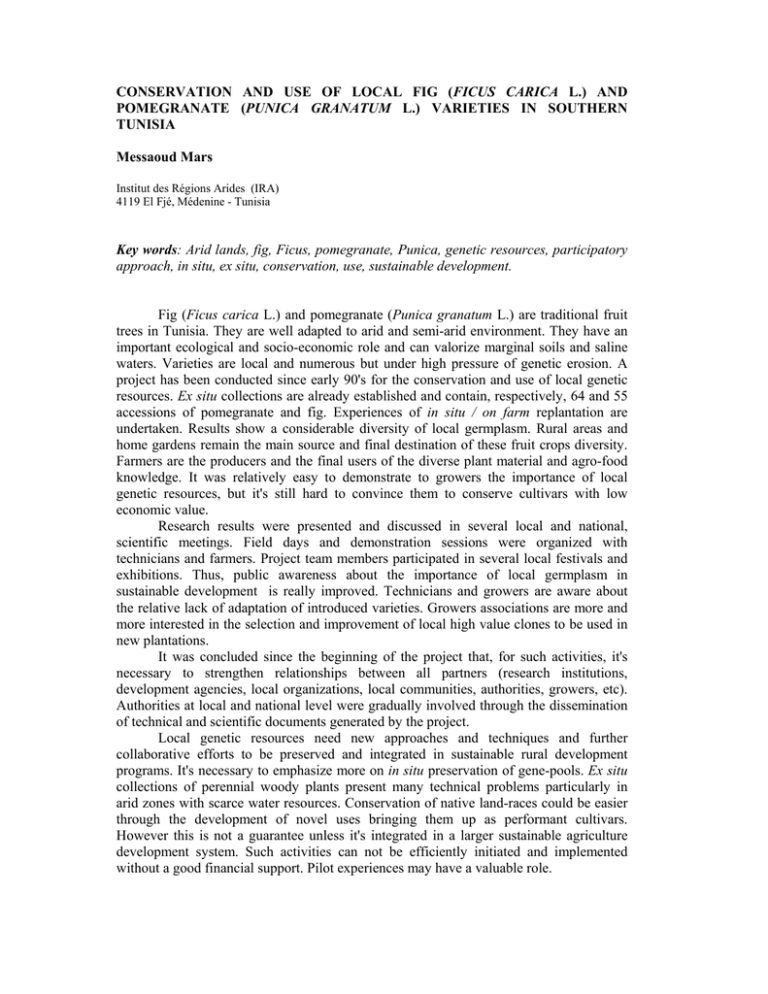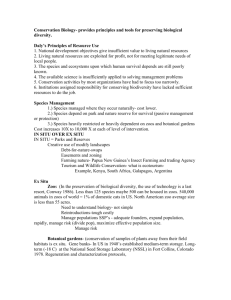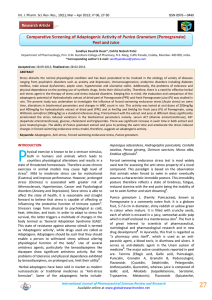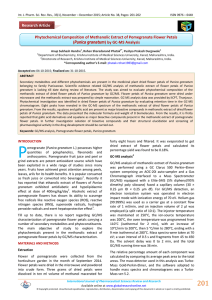FICUS CARICA PUNICA GRANATUM TUNISIA
advertisement

CONSERVATION AND USE OF LOCAL FIG (FICUS CARICA L.) AND POMEGRANATE (PUNICA GRANATUM L.) VARIETIES IN SOUTHERN TUNISIA Messaoud Mars Institut des Régions Arides (IRA) 4119 El Fjé, Médenine - Tunisia Key words: Arid lands, fig, Ficus, pomegranate, Punica, genetic resources, participatory approach, in situ, ex situ, conservation, use, sustainable development. Fig (Ficus carica L.) and pomegranate (Punica granatum L.) are traditional fruit trees in Tunisia. They are well adapted to arid and semi-arid environment. They have an important ecological and socio-economic role and can valorize marginal soils and saline waters. Varieties are local and numerous but under high pressure of genetic erosion. A project has been conducted since early 90's for the conservation and use of local genetic resources. Ex situ collections are already established and contain, respectively, 64 and 55 accessions of pomegranate and fig. Experiences of in situ / on farm replantation are undertaken. Results show a considerable diversity of local germplasm. Rural areas and home gardens remain the main source and final destination of these fruit crops diversity. Farmers are the producers and the final users of the diverse plant material and agro-food knowledge. It was relatively easy to demonstrate to growers the importance of local genetic resources, but it's still hard to convince them to conserve cultivars with low economic value. Research results were presented and discussed in several local and national, scientific meetings. Field days and demonstration sessions were organized with technicians and farmers. Project team members participated in several local festivals and exhibitions. Thus, public awareness about the importance of local germplasm in sustainable development is really improved. Technicians and growers are aware about the relative lack of adaptation of introduced varieties. Growers associations are more and more interested in the selection and improvement of local high value clones to be used in new plantations. It was concluded since the beginning of the project that, for such activities, it's necessary to strengthen relationships between all partners (research institutions, development agencies, local organizations, local communities, authorities, growers, etc). Authorities at local and national level were gradually involved through the dissemination of technical and scientific documents generated by the project. Local genetic resources need new approaches and techniques and further collaborative efforts to be preserved and integrated in sustainable rural development programs. It's necessary to emphasize more on in situ preservation of gene-pools. Ex situ collections of perennial woody plants present many technical problems particularly in arid zones with scarce water resources. Conservation of native land-races could be easier through the development of novel uses bringing them up as performant cultivars. However this is not a guarantee unless it's integrated in a larger sustainable agriculture development system. Such activities can not be efficiently initiated and implemented without a good financial support. Pilot experiences may have a valuable role.











